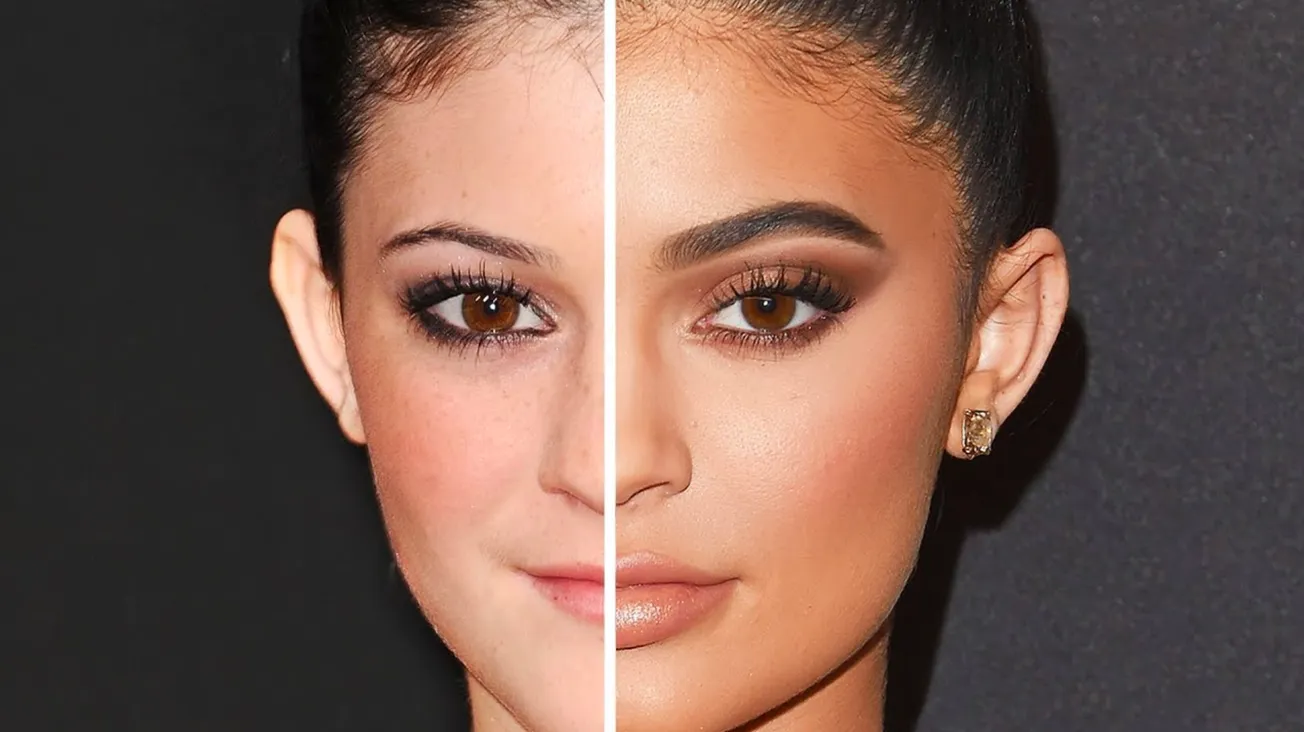Table of Contents
Beautiful women gatekeep beauty by insisting that we only need sleep and hydration to look like them, while in reality, they were just born lucky. Cosmetic and lifestyle conglomerates tell us we need hour-long skincare routines with dozens of products, and diets that make already skinny women anorexic. YouTube makeup tutorials with millions of views on how to achieve “natural” looks demonstrate how to apply twenty different products over 45 minutes. But the truth is that most women need to stop striving; they will never be beautiful anyways.
Women fall along some sort of distribution where one end is truly beautiful, the other end is objectively ugly, and everyone in between falls into one of two categories: well-maintained ugly women and poorly-maintained pretty women. Young women are more differentiated by their natural attractiveness, but once they pass the dreaded 30-year mark, the only thing that matters is maintenance.
People often talk about the Kardashians’ “miracle transformations,'' or other celebrities who “glowed up” over time, but really these are instances of vastly improved self-maintenance which can make anyone more attractive overnight. In this case, maintenance includes both natural and unnatural interventions—but the latter can also make matters worse if done too cheaply. There is a societal bias towards “natural beauty”, where “the less work it seems to have taken, the more attractive the person is considered to be.” What matters is this: the opposite of an ugly woman is not a beautiful one but a well-maintained one, and the opposite of a beautiful woman is not an ugly woman but a poorly-maintained one.
Even the point of botox is to maintain what you had in your youth, which is why only women who begin in their 20s can ever fully reap the rewards of botox. Maintenance is a preventative procedure, not additive. When we differentiate between natural and unnatural beauty, we encounter phenomena like “Instagram Face” which can make women more sexually appealing to men, but not naturally beautiful. Even at Stanford, snarky gossip about who has had a nose job or breast augmentation often crosses fraternities and sororities, and these rumors are factored into future assessments of whether that girl is attractive. It discounts a woman to falsify her beauty, especially if done cheaply enough so that one can determine what she has had fixed up. Lookism is real!
It is true that a small selection of already attractive, but not quite beautiful women can become beautiful—but painstakingly so, through meticulous routines using products that conglomerates advertise. But this labored or artificial beauty is the antithesis of what natural beauty stands for: effortlessness. It is a status symbol because beauty should imply a beautiful lifestyle, that you have the time and resources to devote to pampering yourself.
We have recently democratized the means and need to be beautiful. Throughout history, it was simply unattainable for commonfolk to attain beauty. Aptly put, “the best skin-care trick is being rich.” In polite society, it has always been basic manners to be well maintained. Cosmetics became commercialized around a century ago, and women have been flocking to them ever since in an effort to transcend their genes and class.
This newfound ability was further exacerbated by a rising need to be beautiful. In recent years, availability bias of beautiful women sourced from social media has reinforced beauty standards. In a world where everyone feels they are in the limelight with social media, the desire to constantly look good increases, as one moment of ugliness can produce a lifetime of shame. As photography has gotten cheaper and easier, we no longer can control when and where we are photographed. With the rise of Snapchat, Zoom and Instagram, your camera taunts you from the moment you wake up until you fall asleep again, pushing more people to go under the knife than ever before.
On Instagram, girls keep up appearances with heavily posed and edited photos of themselves, spending hours comparing similar versions of the same photo to determine whether their legs look long enough and their waists small enough. Regardless, their friends will lie to their faces and tell them they look pretty in whichever photo they choose. Private Instagrams of average girls are about showcasing the ten percent of the time where they look as good as possible, not instances of absolute beauty. These white lies that encourage girls to aim for absolute beauty perpetuate the struggle for the impossible, rather than strive to increase their baseline attractiveness and reduce the variance in their day-to-day appearance.
Certain makeup brands like Glossier lean into the minimalist makeup approach, but even Glossier sells over fifty products. Consumerism feeds off ugly women yearning to be beautiful. We need to teach generations of women to unlearn this desire to completely revamp their appearance and instead retrain them to enhance their natural baseline. Let’s stop trying to make everyone beautiful and instead, make everyone the opposite of ugly: looksmaxed.









